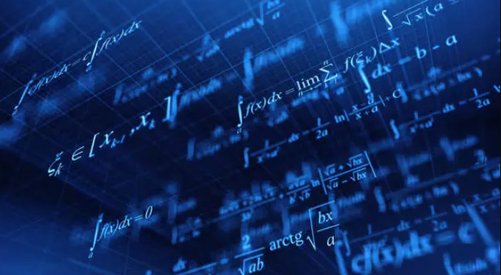Significance of the Formula 99.99-65-0.23: A Deep Dive into Its Implications
In the world of science, technology, and mathematics, numbers and formulas often serve as the foundation for understanding complex systems, phenomena, and relationships. One such formula—99.99-65-0.23—may seem obscure at first glance, but its implications can stretch across various fields, from statistical analysis to engineering calculations and even environmental science. In this article, we will explore the significance of this formula, break it down into its constituent components, and discuss how it might be applied in real-world scenarios.
Introduction
Formulas in science are used to express relationships between variables in a concise and precise manner. Whether it’s the relationship between forces in physics or the correlation of data in economics, formulas are tools that simplify the complexities of nature. The formula 99.99-65-0.23 is an example of such a mathematical representation. To understand its importance, we need to deconstruct the formula and see how it may apply in different contexts.
What Does 99.99-65-0.23 Mean?
The first step in understanding the formula is breaking it down. At a basic level, this formula consists of three numbers:
-
99.99
-
65
-
0.23
Each of these numbers could represent different things depending on the context in which the formula is applied. Let’s look at each one in detail.
The Significance of 99.99
The number 99.99 could represent a value with a high degree of precision or accuracy. It might be used in measurements where extreme accuracy is required, such as in scientific experiments, high-precision instruments, or statistical models where small errors can lead to significant deviations in results.
For instance, in industries like pharmaceuticals, electronics, or aerospace, precision is paramount. The value 99.99 might represent a high-quality product or a measurement that is accurate to four decimal places. In these contexts, such numbers are critical for ensuring the reliability and safety of products and systems.
The Role of 65
The number 65 is simpler to understand but no less important. It could refer to a range of variables depending on its usage. In a financial model, for instance, 65 might represent a percentage, such as a tax rate, interest rate, or the return on investment. In environmental science, it could be the temperature in degrees Fahrenheit or Celsius at which a particular process takes place.
In another example, if we are dealing with a statistical formula, 65 could represent the sample size, a mean value, or a threshold beyond which certain actions or conclusions are drawn.
The Importance of 0.23
The final component of the formula, 0.23, is a smaller number, but it is no less significant. In many scientific and engineering formulas, such a small decimal could represent a coefficient, factor, or correction that fine-tunes the result. This could be a scaling factor in an equation, a reduction factor, or an adjustment that aligns theoretical results with experimental data.
0.23 might also represent a probability or percentage. For example, in a statistical context, it could reflect a confidence level or the likelihood of an event occurring. Understanding how this small number fits into the formula is key to accurately applying the formula in practical scenarios.
Applications of the Formula 99.99-65-0.23
Now that we’ve broken down the formula, let’s look at some potential areas where this formula could be applied. The real-world applications of such a formula are as varied as the fields in which it can be used.
1. Environmental Science and Climate Change
One application of this formula might be in environmental science, particularly in the modeling of climate change and temperature fluctuations. Let’s say that 99.99 represents the precision with which scientists can measure global temperatures, 65 could represent an average temperature in a specific region, and 0.23 might be the adjustment for a climate model accounting for certain variables, such as humidity or atmospheric pressure.
Such a formula could help researchers predict changes in temperature patterns and create more accurate climate models, allowing policymakers to make informed decisions regarding environmental protection and sustainable development.
2. Statistical Analysis and Data Modeling
In the world of data science, the formula 99.99-65-0.23 could be used in statistical analysis. The number 99.99 could indicate the level of confidence in a dataset, 65 might represent a data point or threshold value, and 0.23 could be the error margin or deviation in the model. This kind of formula is often used in predictive analytics and machine learning to fine-tune algorithms and increase the accuracy of forecasts.
For example, in predicting consumer behavior, the formula could help businesses better understand buying patterns. 99.99 might represent the precision of their sales data, 65 could indicate a typical spending pattern, and 0.23 might adjust for seasonal variations.
3. Engineering and Precision Manufacturing
In precision engineering, where high levels of accuracy are essential, such a formula could help in the calculation of tolerances and adjustments for manufacturing processes. 99.99 could represent a highly accurate measurement standard, 65 could refer to a component’s tolerance, and 0.23 might adjust for environmental factors such as temperature changes that affect the materials being used.
For instance, in the production of semiconductor components, the formula could help in determining the exact dimensions required for a chip to function correctly, ensuring the final product operates at maximum efficiency.
4. Finance and Investment Strategies
In finance, the formula could be adapted to model investment returns, interest rates, or risk factors. The 99.99 might represent a near-perfect investment strategy with almost no risk, 65 could be the projected return rate, and 0.23 could reflect a correction factor for inflation or market volatility. This kind of model is used to predict the future value of investments or to optimize asset allocation strategies.
5. Healthcare and Medical Research
In healthcare, formulas like 99.99-65-0.23 are often used in clinical trials, diagnostics, and medical research. 99.99 could represent the accuracy of a diagnostic tool or testing method, 65 might be a threshold for detecting a particular condition, and 0.23 could account for variations in patient demographics or comorbidities. Such formulas help medical professionals make better decisions about treatment options and patient care.
Interpreting and Adjusting the Formula
To apply this formula effectively, it’s important to understand that 99.99-65-0.23 is not set in stone. Its values are adjustable depending on the context and variables at hand. For example, if we were to modify the formula to better fit a new set of data or conditions, we would need to change one or more of the values.
For instance, the 99.99 might change if the precision of our data collection method decreases, or the 65 might adjust depending on the geographical location or economic conditions being analyzed. 0.23 could also be fine-tuned based on further research or more accurate models.
Conclusion
The formula 99.99-65-0.23 is an excellent example of how numbers and formulas serve as powerful tools in various disciplines. From climate modeling to precision engineering, this formula highlights the importance of understanding each component of a mathematical model and how adjustments can make a significant difference in the outcome.
By breaking down the formula, analyzing its components, and exploring its potential applications, we can better appreciate the role that precise numerical values play in shaping our understanding of complex systems. Whether in the realm of science, technology, finance, or healthcare, the use of such formulas helps ensure that decisions are based on reliable data, leading to improved outcomes and more efficient processes.
The next time you encounter a seemingly simple formula, take a moment to appreciate the layers of meaning and application it may hold. The ability to interpret and manipulate formulas like 99.99-65-0.23 is a critical skill that drives progress in many fields, offering solutions to some of the world’s most pressing challenges.







![Swimsuit Edition [Abbb] - 1.20 21 Swimsuit Edition - Chapter](https://www.geniussclick.com/wp-content/uploads/2025/07/rsz_swimsuit_edition_abbb_-_120_21_swimsuit_edition_-_chapter-300x199.jpg)





Post Comment